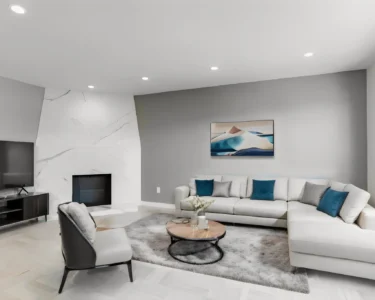Augmented Reality (AR) has emerged as a transformative technology that is revolutionizing user experiences across various industries. By overlaying digital content onto the physical world, AR creates immersive and interactive environments that engage users in new and exciting ways. For exhibition stand builders in Munich, a city known for its vibrant trade show scene, AR offers a powerful tool to enhance exhibitions and captivate audiences. This article explores the impact of AR on user experiences, particularly in the context of exhibition stand design and execution.
Understanding Augmented Reality
What is Augmented Reality?
Augmented Reality (AR) is a technology that superimposes computer-generated images, sounds, and other digital content onto the real world through devices such as smartphones, tablets, and AR glasses. Unlike Virtual Reality (VR), which creates a completely immersive digital environment, AR enhances the user’s perception of the real world by adding digital elements to it. This blending of the physical and digital worlds allows users to interact with their surroundings in novel ways, making AR a powerful tool for engaging and educating audiences.
The Evolution of AR Technology
AR technology has come a long way since its inception. Early applications of AR were limited to simple overlays on screens, but advancements in hardware and software have expanded its capabilities significantly. Today, AR can offer highly detailed and interactive experiences that are accessible to a broad audience. The proliferation of AR-enabled devices, coupled with improvements in processing power and connectivity, has made AR a mainstream technology with applications across multiple sectors, including retail, education, healthcare, and entertainment.
The Impact of AR on User Experiences
Enhancing Engagement and Interaction
One of the most significant impacts of AR on user experiences is its ability to enhance engagement and interaction. AR creates a more immersive experience by allowing users to interact with digital content in real-time. For example, in a retail setting, AR can enable customers to visualize products in their own space before making a purchase. This level of interaction not only makes the shopping experience more engaging but also helps customers make more informed decisions.
In the context of exhibitions, AR can be used to create interactive displays that capture the attention of attendees and encourage them to explore further. Exhibition stand builders in Munich can leverage AR to create dynamic and engaging exhibits that stand out in a crowded trade show environment. By incorporating AR elements into their designs, these builders can offer visitors a more personalized and memorable experience.
Bridging the Gap Between the Physical and Digital Worlds
AR has the unique ability to bridge the gap between the physical and digital worlds, creating a seamless experience that combines the best of both. This is particularly valuable in environments where physical space is limited, such as exhibition stands. AR allows exhibition stand builders in Munich to maximize the use of space by overlaying digital content onto physical displays. For example, a small stand can be transformed into an expansive showroom by using AR to display virtual products and demonstrations.
Additionally, AR can be used to provide additional layers of information that enhance the user’s understanding of the physical world. In a museum exhibit, for example, AR can overlay historical data, images, and videos onto artifacts, providing visitors with a richer and more informative experience. Exhibition stand builders can apply this concept to trade shows by using AR to provide detailed product information, company history, and customer testimonials, all accessible through a simple scan of a QR code.
AR in Exhibition Stand Design: A New Frontier
Creating Immersive and Memorable Experiences
Exhibition stand builders in Munich are increasingly turning to AR to create immersive and memorable experiences for trade show attendees. AR allows these builders to push the boundaries of traditional stand design, offering clients innovative solutions that leave a lasting impression on visitors. For example, AR can be used to create virtual tours of a company’s facilities, allowing visitors to explore production lines, offices, or showrooms without leaving the exhibition hall.
Moreover, AR can be used to create gamified experiences that engage visitors in a fun and interactive way. Exhibition stand builders can design AR-based games or challenges that encourage visitors to explore the stand, learn about the company’s products, and participate in contests. This not only makes the experience more enjoyable for attendees but also increases brand visibility and engagement.
Enhancing Product Demonstrations
Product demonstrations are a key component of any exhibition, and AR offers a powerful tool to enhance these demonstrations. Exhibition stand builders in Munich can use AR to showcase products in ways that would be impossible with traditional methods. For example, AR can be used to show exploded views of complex machinery, allowing visitors to see the inner workings of a product without physically dismantling it. This level of detail can be invaluable in industries such as engineering, automotive, and healthcare, where understanding the intricacies of a product is crucial.
Additionally, AR can be used to simulate real-world scenarios in which a product would be used. For example, a company selling safety equipment could use AR to create a virtual hazardous environment where visitors can see the equipment in action. This not only demonstrates the product’s capabilities but also provides a more engaging and memorable experience for the visitor.
Streamlining the Design and Setup Process
AR is not only transforming the visitor experience but also streamlining the design and setup process for exhibition stand builders in Munich. AR can be used during the planning stages to visualize the stand in 3D, allowing builders to experiment with different layouts, materials, and lighting before committing to a final design. This reduces the risk of errors and ensures that the final product meets the client’s expectations.
Furthermore, AR can be used to assist with the actual setup of the stand. Builders can use AR to overlay digital guides onto the physical space, showing where each element should be placed and how it should be assembled. This can speed up the setup process and ensure that everything is positioned correctly, saving time and reducing the likelihood of mistakes.
Challenges and Considerations in AR Adoption
Technical Challenges and Limitations
While AR offers numerous benefits, there are also technical challenges and limitations that need to be considered. AR experiences require sophisticated hardware and software, and not all devices are capable of running high-quality AR applications. Exhibition stand builders in Munich must ensure that the AR experiences they create are compatible with the devices their target audience is likely to use. Additionally, creating high-quality AR content can be resource-intensive, requiring specialized skills and tools.
Balancing Innovation with Practicality
Another consideration for exhibition stand builders in Munich is the need to balance innovation with practicality. While AR can create impressive and memorable experiences, it should not be used for the sake of novelty alone. The AR elements must add genuine value to the user experience and align with the overall goals of the exhibition. Builders must work closely with their clients to ensure that the AR components are relevant, effective, and contribute to the desired outcomes.
The Future of AR in Exhibitions
Expanding Capabilities and Applications
The future of AR in the exhibition industry looks promising, with expanding capabilities and applications on the horizon. As AR technology continues to advance, it is likely to become even more integrated into exhibition stand design and execution. Exhibition stand builders in Munich will have the opportunity to explore new and creative ways to use AR, from holographic displays to fully immersive virtual environments.
Staying Ahead in a Competitive Market
For exhibition stand builders in Munich, staying ahead in a competitive market will require a commitment to innovation and a willingness to embrace new technologies like AR. Those who can effectively harness the power of AR to create engaging, interactive, and memorable experiences for visitors will be well-positioned to thrive in the evolving landscape of the exhibition industry.
Conclusion
Augmented Reality is transforming user experiences in profound ways, offering new opportunities for engagement, interaction, and innovation. For exhibition stand builders in Munich, AR provides a powerful tool to enhance 10 iGaming Events in Europe, captivate audiences, and stay ahead in a competitive market. As AR technology continues to evolve, its impact on the exhibition industry will only grow, opening up new possibilities for creating immersive and memorable experiences that leave a lasting impression on visitors.







